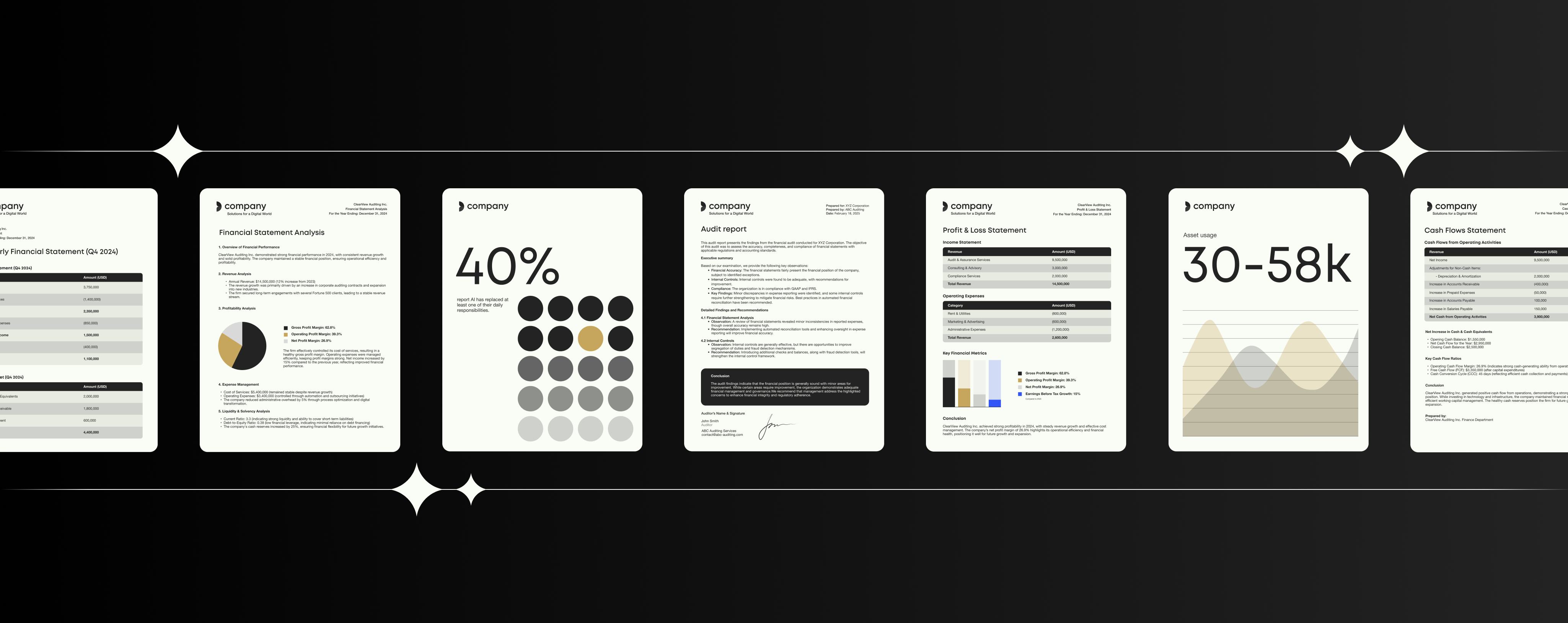Content is everything: the future of content in the Digital HQ

For most of us, our place of work looks very different today than it did just a couple of years ago.
Your company may have followed the likes of Dropbox, Twitter, and Spotify, moving its workforce to a fully remote setup. Or, your team may be adopting a more hybrid approach, facilitating flexible office hours and virtual practices with a revised tech stack. Wherever your organization falls on today’s spectrum of workplace scenarios, most forward-thinking companies are embracing the evolving opportunities of a digital-first environment.
At the center of this change is the Digital HQ – the home of the future of work. Going beyond the limitations of physical offices, this online space connects people to the tools, processes, teams, and content they need to do their job more effectively than ever before. In this virtual HQ, employees, clients, suppliers, and partners have everything they need to meet, create, communicate and collaborate together, at the same time, no matter where they are.
One of the defining elements of the Digital HQ is that within this virtual environment, everything is content. Every piece of data, every video clip, every audio file, every business document, and every creative asset has a digital footprint and, therefore, is content. And because everything is content, content is everything.
If organizations want to prepare for the Digital HQ and keep up with the pace of exploding volumes of content, they must find new ways of managing, handling, and activating it. We believe the answer to this challenge is Content Enablement.
The Content is Everything report
2,000+ professionals on how rapid content growth is creating new risks
What is Content Enablement, and why does it matter?
Until now, content within enterprises has simply been managed. From pitch decks to explainer videos, metadata to logos, it sits static, stored in repositories, and disconnected from workflows.
But for organizations to thrive in the Digital HQ, content doesn’t need to be managed, it needs to be enabled.
Enabled content is active – not static, finding people and workflows, not the other way round. It is accurate, on-brand, compliant with business standards, and drives growth with meaningful insights.
Enabled content isn’t an entirely new concept. Consumer industries, particularly those in the entertainment sector, have long been investing in technologies that intelligently connect content with people. Think about how you discover new films on Netflix versus a trip to Blockbuster. Or how Spotify serves up your morning playlist as soon as you open the app. Content, tailored around your interests and behaviors, finds you instantly and effortlessly. You don’t spend time or energy seeking it out.
With the rise of the Digital HQ, we’re starting to see this shift from static to enabled content gain momentum in the business world. Increasingly, companies are recognizing the need to invest in Content Enablement technologies that ensure content finds users at the moment they need it from within the applications they’re already using.
How does Content Enablement fit into the Digital HQ?
From collaboration platforms that connect employees instantly and asynchronously to advanced CRM solutions, the Digital HQ is supported by a growing list of tech-led categories. Content Enablement is one of these essential categories.
Emerging from the worlds of ECM and CSP, Content Enablement is an evolving space created to move the responsibility for discovery and usage of content from people to technology.
Underpinned by five main subcategories – DAM, Sales Enablement, DMS, Content Creation, and Document Generation, Content Enablement tech helps organizations avoid risks to brand integrity, compliance, and quality on a massive scale.
Templafy is one of the technologies within the Digital HQ, with our next-gen document generation platform defining and advancing the Content Enablement tech category.
Our solution connects content in the Digital HQ to activate and protect brands, drive governance and enable better document creation at any complexity and scale. We do this by bringing content to users when they need it and within where they already work, whether that’s giving employees immediate access to on-brand company templates within Microsoft Office or a fully automated compilation of a sales pitch in Salesforce.
As a result, these companies are producing higher-quality, compliant content built by a more efficient workforce.
4 reasons the need for Content Enablement is rising
Being one of the leading technologies and voices in the Content Enablement space, Templafy is on a mission to help our clients and peers better understand and prepare for this evolving technology category.
One of our first contributions is a new global report – Content is Everything. Analyzing the attitudes, behaviors, and needs of over 2,000 enterprise-level professionals working in the US, UK, Australia, and Germany, the report sheds light on the growing demand and necessity for content in the modern enterprise, and how content enablement technologies can solve those needs.
We’ll be exploring our findings in more detail with a new four-part blog series launching next week. Until then, here is a preview of the report with four researched-backed insights into why the need for connected content is accelerating in the Digital HQ.
1. Content is everything, and it is becoming impossible for people to navigate
Today, content is a finalized business pitch, the metadata that lives inside a document, as well as the video that showcases your solution to prospects and the webpage it lives on.
86% of respondents agree that given the increasing number of work interactions that occur in a digital environment, everything could be considered “content”.
With content spanning more formats and multiplying with the number of platforms we use and digital interactions we make, the cumbersome task of searching for business content has gone from possible to impossible. Leading to increased business risk and reduced employee efficiency.
When content is everything, it’s no longer viable for employees to manually search through enterprise repositories to locate the content they need. Content now needs to find people and workflows – not the other way round.
2. Content creation points are multiplying
There was a time when apps like Microsoft Word used to be the center of a company’s content creation. Following the automation of business processes and a never-ending stream of tech improvements, these content creation points have increased substantially.
To maintain productivity and avoid risk, it has become essential for today’s businesses to integrate content creation applications with workflow applicationsto support effective on-brand, compliant content creation and bring content closer to business processes.
For example, if a salesperson wants to produce a pitch, rather than logging in and out of multiple apps to find, collate and create the content they need, they should have everything they need to generate their document within one integrated CRM platform.
3. Regulatory requirements for organizations are rising
A major driver for intelligent, connected content is the mounting pressure of evolving regulatory requirements like GDPR and CCPA.
To keep up with legal guidelines, alongside the demands of increasingly privacy-savvy clients, organizations need to ensure that every piece of business content they produce is compliant and secure.
A major driver for intelligent, connected content is the mounting pressure ofevolving regulatory requirements like GDPR and CCPA.
88% agree that security requirements are increasing – and that upholding strict requirements has never been more important.
Investing in technology that automates compliance in content creation removes the burden on individual employees to uphold this level of security. Elements such as disclaimers, metadata and document classifications can be instantly inserted into a file, meaning companies can rest assured their risk management and document governance policies are being followed as planned.
4. Data needs to drive the value of content
For too long it’s been impossible for organizations to understand how employee-produced content actually performs. Typically, when documents are static control over them ends when they are sent. Companies are left blindly guessing how their content is being used and by who.
73% say that data requests are exploding faster than manual systems are able to keep up.
Content needs data and measurement to generate value for a business. For instance, Netflix wouldn’t commission a new self-produced series if they had no insight into how well it would be received by their audiences. And, Amazon wouldn’t send you product recommendations for items without knowledge of your buying and browsing history.
Through Content Enablement technologies, businesses should be able to track content performance, giving them actionable data to move away from gut feelingsand toward smart, actionable data-driven decisions. At last, they can understand how their content performs, enabling them to build the most effective content strategy for their business.
Final thoughts: Content Enablement is the future
Without Content Enablement, organizations risk being unable to maintain brand integrity, compliance, and quality through their business content. They open their teams up to risk while missing out on the returns of high-quality content built by a more efficient workforce.
You can learn more about Content Enablement and why your business needs to invest in this technology with our new global report ‘Content is Everything’. To view the full findings you can download our report here.
Be sure to also keep an eye on Templafy’s LinkedIn for our new four-part blog series, which will explore some of our key findings and predicted enterprise content trends.



